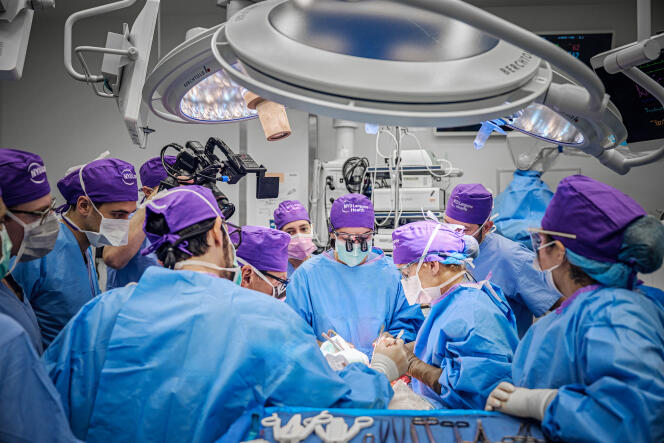


It's a new step in the history of face transplantation. The first double partial face and whole eye transplant took place on May 27 at New York Langone University Hospital (NYU) in the United States, the medical team announced at a press conference on Thursday, November 9.
The patient, Aaron James, 46, an Arkansas resident and US veteran, was electrocuted in June 2021 by over 7,000 volts while working on a high-voltage line. The accident resulted, among other things, in the loss of his left eye, nose, mouth, chin and teeth, as well as part of his left arm.
Supervised by Dr. Eduardo Rodriguez, the plastic surgeon in charge of NYU's facial transplant program, the project was conceived as early as August 2022. An ambitious plan that mobilized 140 people from all specializations.
Since the first face transplant in France in 2005, only 48 face transplants have been performed worldwide, according to a 2021 publication, and eyes have only been involved in partial transplants, mainly of the cornea. The few attempts to transplant a whole eye – some dating back to the 19th century – have failed, one of the main challenges being to reconnect the optic nerve to restore vision.
So why try this procedure on James? In recent years, research has made significant progress in the use of immunosuppressive drugs, prescribed for life to avoid transplant rejection. But these drugs are not harmless: beyond the risk of infection, they are also likely to attack the kidneys or accelerate aging. "Since James needed a face transplant anyway, which required immunosuppressants, the risk/benefit ratio of an eye transplant was very low," Rodriguez explained in a press release.
After just three months, a compatible donor was identified – size, skin color and biomarkers. To optimize the result, Rodriguez's team used cutting-edge technologies. The Belgian company Materialise, which specializes in 3D planning and the manufacture of made-to-measure medical devices, provided 3D models of the operation to come. It also designed custom 3D-printed cutting guides "enabling us to take bone segments from the donor and place them precisely on the recipient, like a jigsaw puzzle," Rodriguez explained. The titanium screws holding the bones together were supplied by DePuy Synthes, a Johnson & Johnson company.
"The team practiced on numerous cadavers to create the models and fully rehearse the procedure," explained Emily Jones, engineer at Materialise, who was involved in the project. "On D-Day, we had 24 hours to receive the donor scans, print the custom cutting guides and adjust the surgical plan to the new data."
You have 60% of this article left to read. The rest is for subscribers only.
